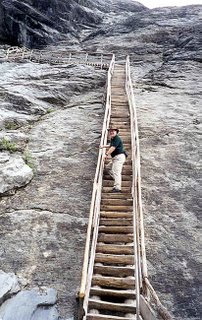I’ve always been impressed by the incredible spectacle that glaciers provide. I can’t think of a better way to see the forces of nature in action. Natural climate change accelerated by man-made global warming is causing many of the world’s glaciers to recede at a rate faster than ever recorded. Some of the glaciers most accessible to travelers are in danger of disappearing in our lifetime. So if you want to see them, travel soon and bring your camera.
Here’s where to see some of my favorite glaciers that are accessible without too much effort:
Glacier National Park, Montana: The largest concentration of glaciers in the Continental United States is melting away. According to the park website “The glaciers in Glacier National Park are melting. In 1850, 150 glaciers covered the landscape. Today in 2006, there are only 27 glaciers left inside the park, a 75-80% decrease. If current warming trends continue, it is projected that between 2030 and 2050, there will be no more glaciers in Glacier National Park.”
Glacier National Park offers the chance to see the disappearing glaciers from your car or from a bus tour. Hikers and backpackers can get much closer to the action. Mer de Glace
Mer de Glace
Photo Credit: Christopher Gould
Chamonix, France – This fabled winter resort in the shadow of Mont Blanc is home to Europe’s second largest glacier, the Mer de Glace. A cog-wheel train travels to the glacier from the center of Chamonix in only twenty minutes. There’s a spectacular overlook and little cable cars will take you down to the glacier itself where you can explore a man-made ice cave, the obligatory glacial attraction. I love the unearthly blue glow within the ice with the constant dripping in summer. The industrious French don’t let the drips go to waste; the meltwater of the Mer de Glace generates electricity in a little hydroelectric station. The steps to the Ober Grindelwald Glacier
The steps to the Ober Grindelwald Glacier
Photo Credit: Becky Gould
Grindelwald, Switzerland – The postcard-perfect Grindelwald Valley is home to a walk-up glacier (if you don’t mind a 1500 step wooden staircase). The Ober Grindelwald Glacier is a small glacier that’s receding up its valley. It is a perfect geology lesson as you walk up the small valley with less and less life as you approach the glacier, the bare rock just recently uncovered for the first time in centuries. Inside Ober Grindelwald Glacier
Inside Ober Grindelwald Glacier
Photo Credit: Christopher Gould (timer)
Glacier Bay, Alaska – Glacier Bay National Park offers a large-scale version of the same geology lesson where the enormous Glacier Bay has been uncovered in the last 250 years as glaciers receded. Most visitors visit the park aboard cruise ships – it’s only accessible by water and air. Viewing Hubbard Glacier from Radiance of the Seas.
Viewing Hubbard Glacier from Radiance of the Seas.
Photo Credit: Becky Gould
Disenchantment Bay, Alaska – Located in the Wrangell-St. Elias National Park and Preserve, Disenchantment Bay is home to Hubbard Glacier, the largest tidewater glacier in North America. Tidewater glaciers advance all the way to ocean waters where huge pieces “calve” and break off with a thunderous sound. Hubbard Glacier is advancing and its face measures over six miles wide. Cruise ships have recently begun to visit this incredible glacier.
Bernardo O’Higgins National Park, Chile – Hubbard Glacier’s South American twin is the Pio XI Glacier. South America’s largest tidewater glacier is most easily seen by cruise ship or tour boat.
Tuesday, October 03, 2006
Glaciers: See Them Before They're Gone
Posted by
Christopher Gould
at
1:03 PM
![]()
Labels: cruises, destinations DiggIt! add to Del.icio.us
Subscribe to:
Post Comments (Atom)



No comments:
Post a Comment